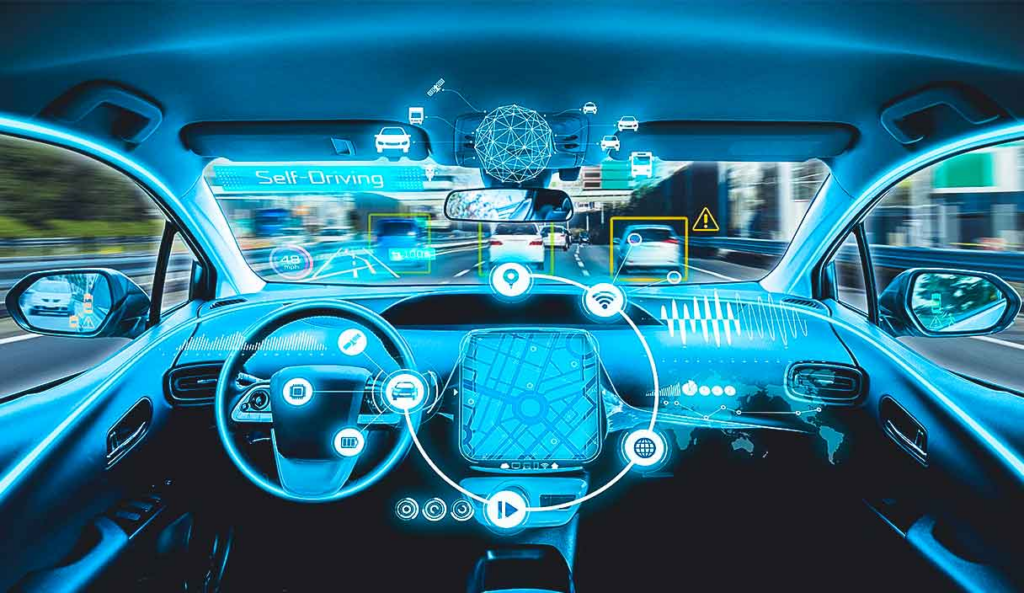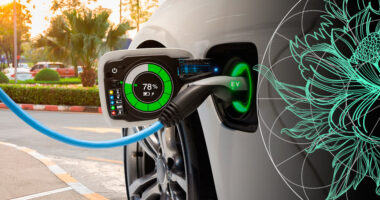Autonomous vehicles will drive the transformation of the motor / auto insurance market, according to Moody’s Investors Service. Autonomous vehicles are on the horizon, but adoption will take time.
Personal and commercial auto insurers will initially benefit from fewer accidents, the rating agency argued.
Intelligent technologies will transform the automotive landscape over the coming decades.
However, the same insurers face long-term risks that autonomous vehicles will reduce the need for auto insurance (see How AI Technology Can Help Insurers?).

Vehicles with Level 2 autonomy (partial automation, with constant driver supervision) are already available for the public from many automakers, and Mercedes-Benz recently won approval for Level 3 autonomy (hands-free driving under certain conditions).
Autonomous taxis are already in service. Autonomous technologies will continue to improve, and Level 3+ autonomous vehicle sales will increase over the coming decade. Given that the average vehicle age in the US is about 12 years old, a shift in the vehicle fleet to full autonomy could take decades, the ratings firm suggested.
Autonomous mobility has the potential to dramatically transform the automotive insurance market, from underwriting to claims and beyond (see New Trends that Will Disrupt US Auto Insurance Market). Consider a hypothetical US consumer of the future, Jane, who acquires her first semiautonomous car, attracted by its connected technology and advanced-safety capabilities. Crucially, it comes with insurance that calculates her premium payments by automatically assessing her driving in real time through the wireless connectivity feature incorporated into such vehicles.
Autonomous vehicles and other intelligent technologies
Autonomous vehicles and other intelligent technologies will initially boost auto insurer profitability.
Autonomous and other intelligent auto technologies will significantly reduce the frequency of accidents, which will boost insurer profitability.
Although US auto insurers have posted weak earnings over the last two years because of higher auto repair costs and used vehicle prices, we expect that as intelligent technologies get better, insurer loss costs will gradually decline.
Long term, autonomous vehicles could dramatically reduce premiums and profits for auto insurers.

As advanced autonomous vehicles become prevalent, accident frequency is likely to fall precipitously over time, and could ultimately translate into significantly lower loss costs and premiums for auto insurers.
Profits are likely to also decline, since most insurers set profit targets as a percentage of premiums.
Three technologies will shape the future of mobility and global auto insurance: autonomous driving, connectivity and embedded telematics, and vehicle electrification.
But these technologies will also shape an exciting new business dynamic for OEMs and insurance carriers. On the one hand, the introduction of the connected car and embedded telematics means OEMs will have more access to the customer and vehicle data than ever.
It also means OEMs will be in an advantageous position to disintermediate insurers. Moreover, the McKinsey Center for Future Mobility expects connected cars to account for 90 percent of new US vehicle sales by 2025.
On the other hand, insurers may be able to take advantage of the technology and mobility trends described in Jane’s journey to capitalize on insurance that is based on vehicle usage in real time, combined with an automated-claims process—creating opportunities to improve both loss and expense ratios.
Auto liability could shift, but limited demand for auto insurance will remain

Regulators, lawmakers and courts will have to determine how liabilities for accidents caused by autonomous vehicles are shared among automobile manufacturers, technology companies, drivers, and their insurers.
Some, albeit smaller, demand for specific auto-related insurance coverages such as product liability for automakers, could remain, the company suggested.
Insurers have time to respond to these shifts, Moody’s underlined.
“Because changes to the auto insurance industry will be gradual, we believe innovative insurers will be able to adapt their operations and balance sheets to these changing circumstances. Fundamental credit strengths, including innovation, adaptability, and strong financial metrics, help offset long-term risks.”
Commercial auto faces different challenges
There are several unique factors that could speed up, or slow down, the adoption of autonomous vehicles for commercial uses, Moody’s argued.
Waymo autonomous taxis are available in San Francisco, Phoenix, and soon Los Angeles, while Cruise autonomous taxis are only available in San Francisco.
All three are cities offer moderate density and mild weather. It is unclear when autonomous taxis will be available in denser cities with challenging weather conditions (including snow), such as New York.
Once autonomous long-haul trucks become available, trucking companies could be under economic pressure to replace their fleets with autonomous trucks given lower operational costs of drivers’ wages, less required downtime due to driver fatigue, cheaper insurance costs, lower wear-and-tear on the vehicles, and better fuel economy algorithms.

Moody’s expects resistance from labour unions and from professional drivers, which make up over four million jobs in the US.
Given the high damage that a long-haul truck can cause in an accident, driver oversight will likely be required for many years. Truck drivers also watch over valuable cargo to protect it from theft or vandalism.
As these jobs are eliminated, there could also be reduced demand for workers’ compensation insurance.
Autonomous driving could be the most disruptive influence on the insurance market for a simple reason: it promises to significantly reduce the frequency of accidents, resulting in improved safety and the means to shift auto insurance to a “predict and prevent” product.
Significantly, the burden of car insurance liability will shift from the human operator to the commercial party associated with the autonomous-vehicle (AV) technology and capabilities (for more on AV liability by type of vehicle, see sidebar, “Six types of AV capability”).
Connectivity and embedded telematics
Connected vehicles use wireless technology to communicate with external entities, sending and receiving data as part of services that are provided to the driver or vehicle’s owner.
Unlike today’s mobile apps and aftermarket devices, which require customer engagement and installation to facilitate limited connectivity, the embedded technology in this new era of connected telematics will yield a seamless and passive customer experience, ensuring a high-quality, continuous, bidirectional flow of information.
While connectivity is crucial for autonomy, its potential value far exceeds market application.
With connectivity, OEMs can envision an array of services, insights, and customer engagement opportunities that extend well beyond today’s limited new-vehicle purchasing experience.
As profit margins on new vehicles continue to shrink, the potential for new recurring revenues unlocked by connectivity and “vehicle as a platform” innovations will ensure that this capability gains traction.
…………………..
Edited by 








